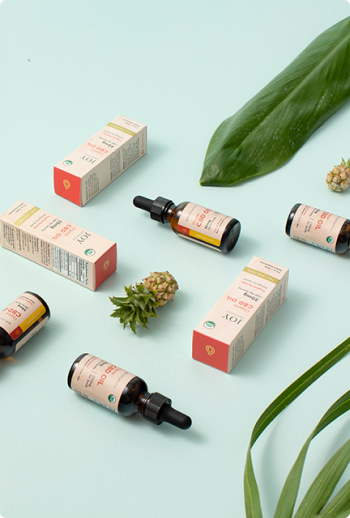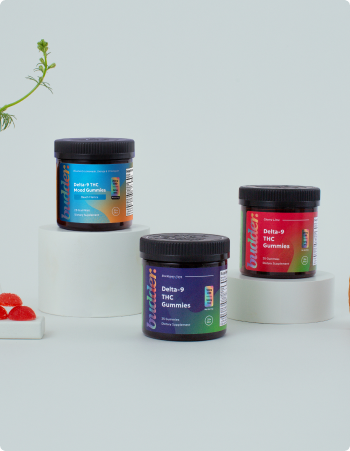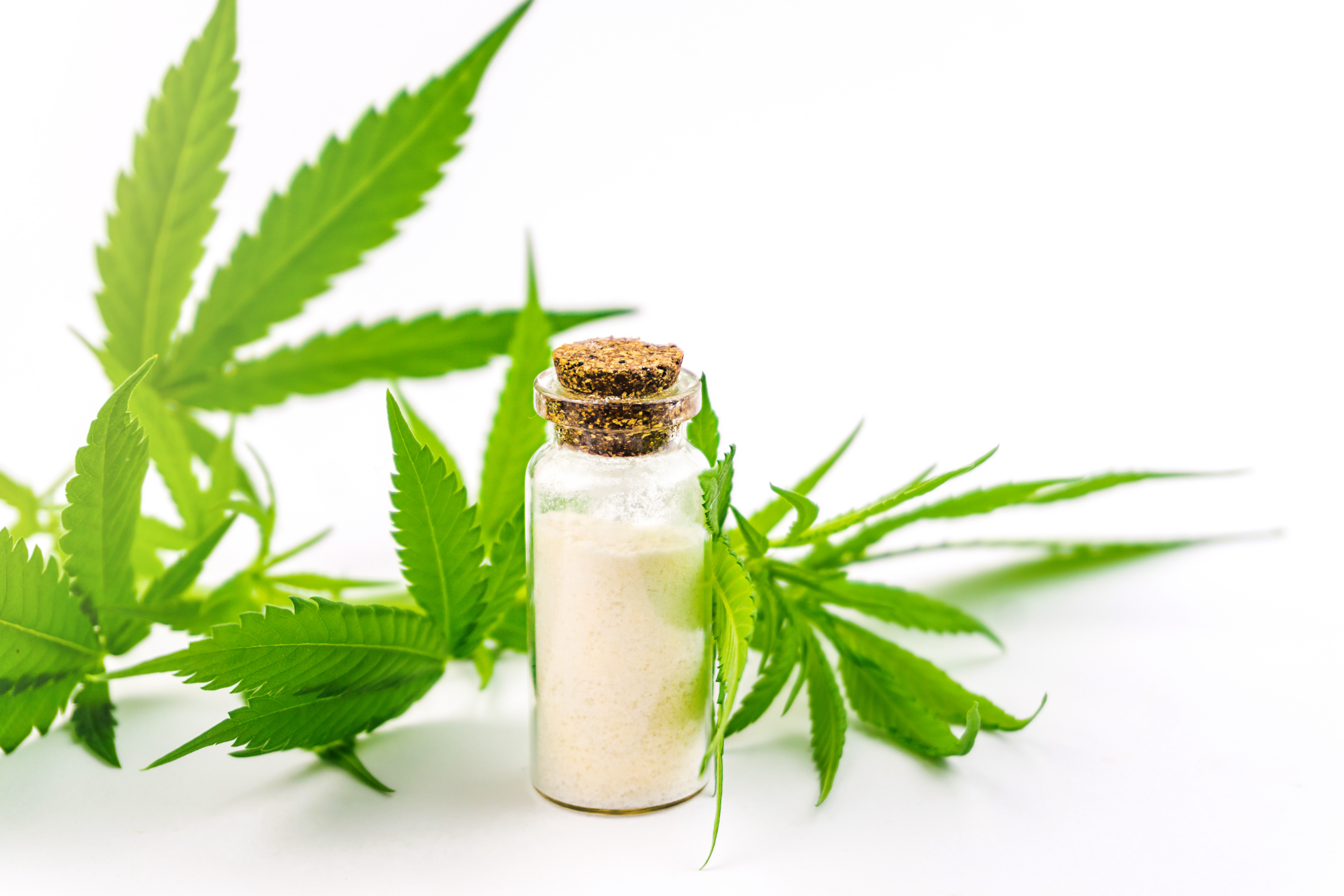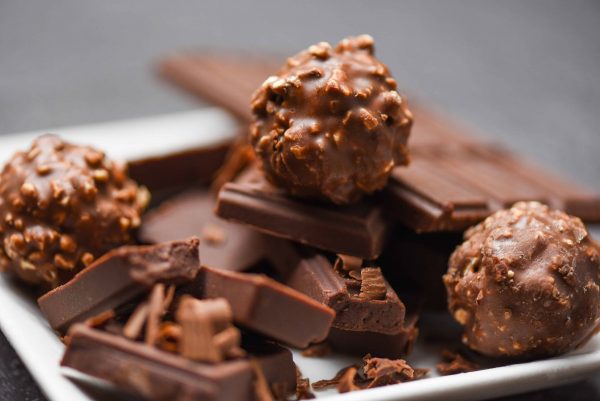Please note: Emerging research has shown promising benefits of CBDa, but because certain regulations affect what CBD companies can and cannot say about cannabinoids, we won’t be exploring some of the more recent studies in this blog post.
We all love CBD, but some of that appreciation should also go to cannabidiolic acid (CBDa). CBDa is 1 of 100+ phytocannabinoids in hemp. However, it's one of the most essential because CBDa is the precursor to CBD! If that's not enough reason to love CBDa, this phytocannabinoid has other potential benefits. Here's just about everything you need to know about CBDa oil!
What Is CBDa?
CBDa is one of the most abundant phytocannabinoids present in hemp. It was first isolated in 1996, but it hasn't had many studies performed on it until recently.
CBDa is one of the primary phytocannabinoids derived from the "mothership" phytocannabinoid—cannabigerol acid (CBGa). When CBGa interacts with cannabidiolic-acid (CBDA) synthase, it produces CBDa.
CBDa naturally turns into CBD as it ages in wild cannabis. CBD oil manufacturers can also make this process transpire in the controlled setting of their laboratories.
How Does CBDa Become CBD?
CBDa transforms into CBD as a result of pressure. In farming environments, this pressure comes in the form of direct sunlight or lamps. This process is known as decarboxylation.
Decarboxylation breaks down an added carboxyl ring attached to the molecule chain of CBDa. Once this happens, CBD becomes activated.
Heat is the most common instrument used for decarboxylation. It stimulates phytocannabinoids within hemp plant fibers. This energy catalyzes chemical reactions that alter the structure of CBDa to become CBD.
Home-growers can also decarboxylate their hemp flowers to activate CBD. Place the hemp on a tray and put it in the oven at around 240 °F.
After 15-20 minutes, flip the buds over and allow them to decarboxylate for another 15-20 minutes. Make sure that the flowers don't scorch, as it will degrade the CBD content.
Oven temperatures vary depending on age, elevation, and other factors. Keep this in mind when checking on your flowers. You might require more or less time to decarboxylate your hemp properly.
How CBDa Works
While producing CBD might be a great accomplishment of CBDa, it's not the only one. There might be some benefits to using CBDa oil on its own.
CBDa interacts with the body differently than other phytocannabinoids. Most phytocannabinoids either bind to or stimulate CB1 or CB2 receptors. These reactions influence communication through our cellular network known as the endocannabinoid system.
Each phytocannabinoid tends to have a unique relationship with our cannabinoid receptors. For instance, THC takes a liking to CB1 receptors, binding to them throughout our central nervous system. Thus, we experience a psychoactive experience whenever we consume THC-rich products.
Unlike most phytocannabinoids, CBDa doesn't exhibit much interest in either cannabinoid receptor! However, CBDa still seems to influence the endocannabinoid system positively by promoting the balance of the cyclooxygenase-2 (COX-2) enzyme. In turn, CBDa may provide its own unique wellness benefits.
CBDa's benefits help round out the overall efficacy of other phytocannabinoids. This synergistic act is known as the entourage effect.
Every phytocannabinoid presents its own special skill that positively impacts the endocannabinoid system. That's why it's so important to purchase broad spectrum and full spectrum CBD products rather than CBDa isolates.
While CBDa distillate might be beneficial, full spectrum and broad spectrum CBD products are optimized to promote the entourage effect. Having other phytocannabinoids in the formula enhances the overall experience.
Benefits of CBDa
The benefits of CBD, THC, and other phytocannabinoids have been well-documented. However, CBD had to get its good traits from somewhere! That's why CBDa oil might provide benefits for your daily routine. Here's how!
Joint and Muscle Health
A variety of things can cause discomfort in joints and muscles. The presence of too much COX-2 can amplify these sensations.
COX-2 causes the body to produce prostaglandins. Levels of these hormones tend to be elevated in those with joint stiffness. Since CBDa may help balance COX-2, CBDa oil might support a healthy and active lifestyle.
Essential oils provide more than a relaxing fragrance. They're also rich in terpenes, which are plant-based molecules that also support the entourage effect!
Is CBDa Legal?
CBDa is the precursor to CBD, a non-psychoactive phytocannabinoid. Under the Farm Bill, hemp has been decriminalized as a Schedule 1 controlled substance. Therefore, the sales and possession of CBDa oil are usually allowed on a federal level—though state laws may vary.
There are select states that require a medical card to purchase CBD oil. In these states, CBDa oil might be hard to find or unavailable.
If you are a medical marijuana patient and are traveling with CBDa oil that has THC in its formula, make sure you have your card on your person. Otherwise, be aware of local cannabis laws before traveling with hemp oils.
How to Use CBDa
Hemp is one of the most versatile plants in the world. Its nutrients can be enjoyed in a variety of ways. Here's how you can add CBDa to your daily routine.
Hemp Juice
Raw hemp flowers are some of the richest sources of CBDa. Juicing hemp will provide you with fresh phytocannabinoids and other nutrients. Raw hemp has a strong, earthy flavor; if you prefer, you can try cutting it with pungent herbs like ginger or sweetening things up with melon.
CBDa Drops
There isn't a large market for hemp extracts with high levels of CBDa. However, MontKush has a CBDa-rich CBD drop available. It is a full spectrum extract enhanced by the benefits of the entourage effect.
CBDa Topicals
CBDa topicals are growing in popularity. ChyloCure has a unique blend called Chylobinoid that they use to formulate CBDa topicals. This formula contains 70% CBDa, 5% CBD, 5% other minor phytocannabinoids, and other minerals.
How to Shop for CBDa
With increasing interest in hemp products, inferior CBDa products might be common. It's important that you read the ingredients list thoroughly before making any purchases.
Make sure that all of the ingredients come from natural or organic sources. Low-quality ingredients will inevitably diminish the effects of CBDa oil.
Check that the company performs third-party lab testing. Unbiased lab tests force companies to remain transparent. Reading a lab report will ensure that your product is free from potential pollutants, toxic chemicals, or unwanted phytocannabinoids like THC.
While you read your lab report, verify the CBDa content. Even full spectrum or broad spectrum hemp extract can have negligible levels of this phytocannabinoid.
Do you have questions about shopping for CBDa, or hemp products in general? Contact us seven days per week to speak with one of our hemp experts. We are more than happy to help you make informed decisions about your wellness.




























































Join in on the Conversation
Your email address will not be published. Once your comment is approved, it will be published.